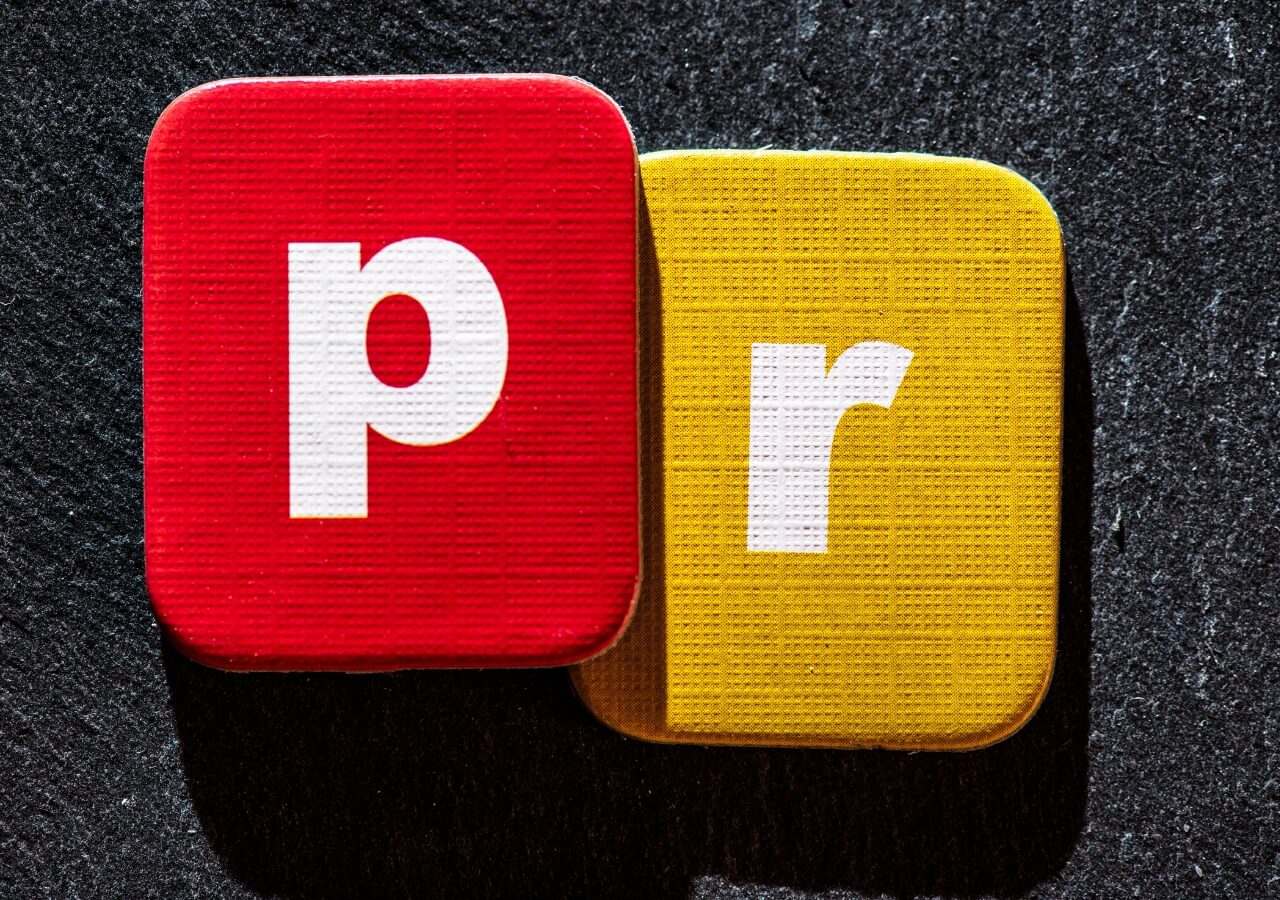Building a digital PR strategy for small and medium-sized enterprises (SMEs) and start-ups is essential for creating brand awareness, establishing credibility, and driving growth.
What is digital PR?
Digital PR, or digital public relations, refers to the use of online channels and digital platforms to manage a brand’s reputation, communicate with its audience, and generate positive exposure. It involves leveraging digital media outlets, social media platforms, influencers, and online communities to reach and engage with target audiences effectively.
Digital PR encompasses various strategies and tactics, including:
- Media Relations: Building relationships with journalists, bloggers, and online publications to secure media coverage and earn backlinks.
- Content Creation: Producing high-quality, shareable content such as articles, blog posts, press releases, infographics, and videos to engage audiences and attract media attention.
- Social Media Engagement: Leveraging social media platforms to connect with followers, share content, participate in conversations, and build brand visibility and reputation.
- Influencer Marketing: Partnering with influencers and thought leaders in your industry to amplify your message, reach new audiences, and build credibility.
- Online Reputation Management: Monitoring and managing your brand’s online reputation through proactive engagement and response to mentions, reviews, and comments across digital channels.
- Search Engine Optimization (SEO): Optimizing digital PR content for search engines to improve visibility and organic search rankings, driving more traffic to your website.
- Community Building: Engaging with online communities, forums, and groups relevant to your industry or target audience to establish thought leadership and foster brand loyalty.
Difference between traditional PR and digital PR
Traditional PR and digital PR share the common goal of managing a brand’s reputation and generating positive exposure, but they differ in their approaches, channels, and tactics. Here’s how they compare:
- Channels and Mediums:
- Traditional PR: Relies on traditional media outlets such as newspapers, magazines, television, radio, and print publications to disseminate messages and reach target audiences.
- Digital PR: Utilizes digital channels and online platforms such as websites, blogs, social media, email newsletters, online publications, and influencers to engage with audiences and distribute content.
- Reach and Accessibility:
- Traditional PR: Has a limited reach and may struggle to target niche audiences. Distribution is often restricted by geographical boundaries, circulation numbers, and editorial decisions.
- Digital PR: Offers broader reach and accessibility, reaching global audiences instantly. Content can be tailored to specific demographics, interests, and geographic locations, allowing for more targeted and personalized communication.
- Speed and Timeliness:
- Traditional PR: Typically involves longer lead times for pitching stories, securing media coverage, and publishing content. Responses to news events or crises may be delayed due to editorial processes.
- Digital PR: Operates in real-time, allowing for immediate responses to news, trends, and events. Content can be published and distributed quickly, enabling brands to stay agile and relevant in fast-paced digital environments.
- Measurement and Analytics:
- Traditional PR: Evaluation of campaign success relies on metrics such as media impressions, circulation figures, and advertising equivalency. Measuring impact and ROI can be challenging.
- Digital PR: Offers robust measurement and analytics tools to track metrics such as website traffic, social media engagement, click-through rates, conversions, and brand sentiment. Data-driven insights enable continuous optimization and demonstrate tangible results.
- Interaction and Engagement:
- Traditional PR: Communication is mostly one-way, with limited opportunities for direct interaction and engagement with audiences. Feedback and responses may be slower or less immediate.
- Digital PR: Facilitates two-way communication, enabling brands to engage directly with audiences through social media, comments, chats, and online forums. Real-time feedback and conversations foster deeper relationships and brand loyalty.
Steps to creating a digital PR strategy
Creating a digital PR strategy for small and medium-sized enterprises (SMEs) and start-ups requires careful planning, strategic thinking, and a focus on leveraging digital channels to achieve business objectives. Here are the steps to develop an effective digital PR strategy tailored to the needs of SMEs and start-ups:
- Define Goals and Objectives
Start by clearly defining what you want to achieve with your digital PR efforts. Common goals for SMEs and start-ups may include:
- Increasing brand awareness
- Generating leads and sales
- Building credibility and trust
- Driving website traffic
- Establishing thought leadership
- Understand Your Audience
Always prioritize your customers. Think about who your ideal and actual customers are, both potential and current ones. By doing this, you’ll gradually understand your customers better and create customer profiles called audience personas.
Audience personas are imaginary customers who represent the typical behaviors, needs, and challenges faced by your real customers. Creating these personas helps you figure out which media platforms your customers use and the influential figures they follow, like role models or influencers. Once you know your target audience and preferred channels, tailor your PR efforts to match your audience personas’ preferences to boost engagement.
- Do your competitor analysis
To stay ahead, it’s smart to check out what your competitors are up to and see how well they’re doing. A SWOT analysis is a great way to do this. SWOT stands for Strengths, Weaknesses, Opportunities, and Threats. It helps you spot areas where your brand can shine and areas where you might need to be careful. By doing this analysis, you can figure out what topics could boost your marketing and which ones might not be worth your time.
- Research and Identify Key Digital Channels
Conduct research to identify the digital channels where your target audience is most active. This may include:
- Social media platforms (e.g., Facebook, Twitter, LinkedIn, Instagram)
- Industry-specific forums and communities
- Online publications and blogs
- Influencer networks and partnerships
- Craft Your Key Messages
Develop clear, concise, and compelling key messages that align with your brand values and resonate with your target audience. Ensure consistency across all communication channels and tailor your messages to each digital platform.
- Develop a Content Strategy
Create a content strategy that supports your digital PR objectives and resonates with your target audience. Consider various content formats, including:
- Blog posts and articles
- Press releases
- Infographics
- Videos
- Case studies
- Whitepapers and eBooks
- Leverage Media Relations
Build relationships with journalists, bloggers, and online influencers who cover your industry or niche. Offer them exclusive stories, insights, or expert commentary to secure media coverage and earn backlinks to your website.
- Engage on Social Media
Leverage social media platforms to amplify your PR efforts, engage with your audience, and build brand awareness. Share your content, participate in relevant conversations, and connect with influencers and industry leaders.
- Implement SEO Strategies
Optimize your digital PR content for search engines to improve visibility and attract organic traffic to your website. Use relevant keywords, optimize meta tags, and include internal and external links to boost your search engine rankings.
- Set realistic KPIs for your strategy
Continually assessing the success of your strategy is crucial to optimizing ROI. Establishing clear goals and KPIs at the campaign’s outset is key. KPIs should be regularly evaluated, ideally quarterly, to gauge relevance and success. Examples of KPIs include web traffic, search visibility, new backlinks, media coverage, social media engagement, and UTM tracking. Monitoring these metrics provides insights into brand awareness, credibility, and audience engagement. Defining measurement methods before launching a digital PR campaign is essential for effective evaluation and optimization.
- Monitor and Measure Results
Use analytics tools to track the performance of your digital PR efforts and measure progress toward your goals. Monitor metrics such as website traffic, social media engagement, brand mentions, backlinks, and conversions.
- Continually analyse your budget and resource
Efficiently managing your campaign budget entails assessing the resources required to execute a successful PR strategy. These resources encompass dedicated employee hours, specialized equipment, access to facilities, and necessary materials for implementation. By allocating resources effectively, you optimize the impact of your efforts, ensuring a cost-effective and efficient approach to achieving your strategy goals. This strategic approach maximizes the value derived from your budget while achieving desired outcomes.
- Adjust and Optimize
Based on your analysis, refine your digital PR strategy to improve results and better align with your business objectives. Stay agile and adaptable, and be prepared to adjust your approach based on changing market conditions and audience feedback.
Conclusion
Building a digital PR strategy for SMEs and start-ups involves careful planning, targeted outreach, and continuous optimization. By defining clear goals, understanding your audience, creating valuable content, and leveraging media relationships, you can effectively enhance your brand’s visibility and credibility in the digital space. Regularly monitor and adjust your strategy to ensure sustained success and growth.






